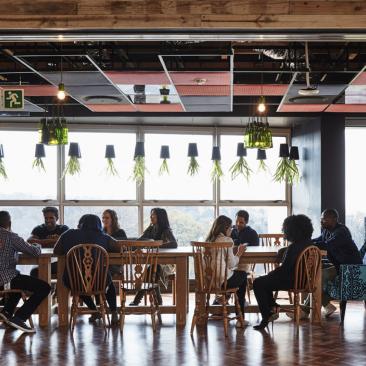The International Green Interior Awards, now in its 4th year, focuses on the integration and creation of green interior products and structural interior design.
With 10 categories, the International Green Interior Awards celebrates interior designers, architects, interior stylists, fit-out professionals, interior decorators, manufacturers and suppliers who are providing healthy, ethical and environmental interior solutions for their clients.
Date: Thursday 27 July 2017
Time: 6pm to 9pm
Location: Brickworks Design Studio, 50 Carrington Street, Sydney CBD
Get your tickets at this link.

OVERALL WINNER AND Lendlease OFFICE (LARGE) WINNER: Google Head Office South Africa by Boogertman + Partners, South Africa
A truly well thought out sustainable project inspired by the contextual fabric of Johannesburg, South Africa. Jeans were collected from staff members to create the upholstery. Furniture was made of recycled / upcycled items such as old wheel barrels that were converted into stools. 7500 recycled magazines were used as cladding in the waiting nook .Their commitment to using ethical products from the surrounding community and the use of sustainable products is a wonderful approach that educates others in the possibilities of being sustainable whilst designing a cool office. Very inspiring.
The Google South Africa project boasts an accreditation of both a 5-star Green Star rating as well as a Gold LEED certification. The project was inspired by its contextual fabric of Johannesburg. Many items for the design were sourced from the city, contributing to the concept’s implementation through an authentic initiative to upcycle and reuse objects and non-conventional building media alike, consistent to the personality of the city. The project created a platform for questioning the standard approach to green design by reinterpreting the necessities of a workplace setting, aligning the requirements with the city context and attending to the needs of the specific users. Views to the exterior, visual comfort, internal air quality, ergonomics, waste monitoring and recycling initiatives, daylight harvesting and energy-efficiency were, amongst others, developed in a way to be conducive to a comfortable work environment. Second-hand magazines, advertisement banners, crates, reclaimed timber and African beads are, amongst many others, some of the non-traditional materials sourced from the city and used within the design.
